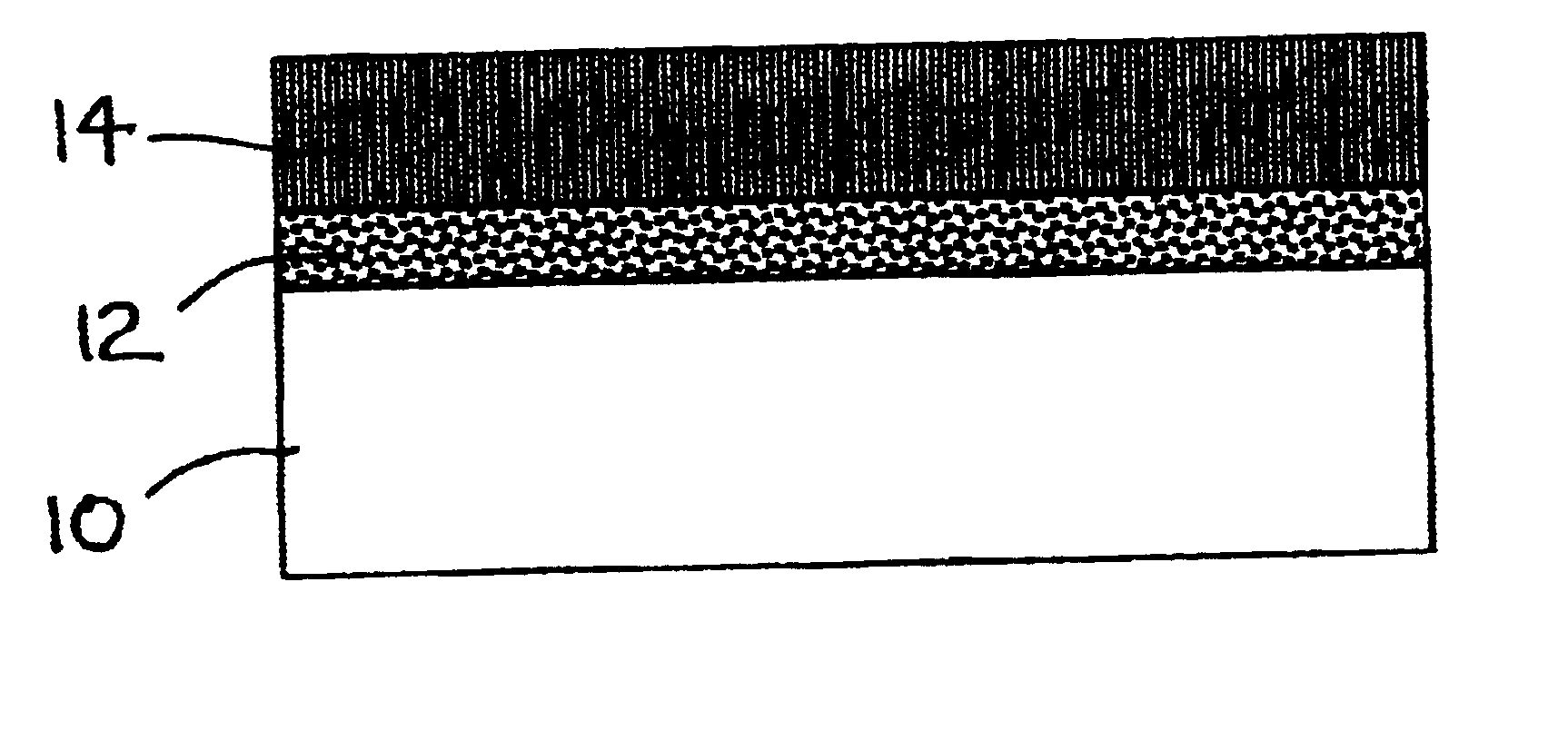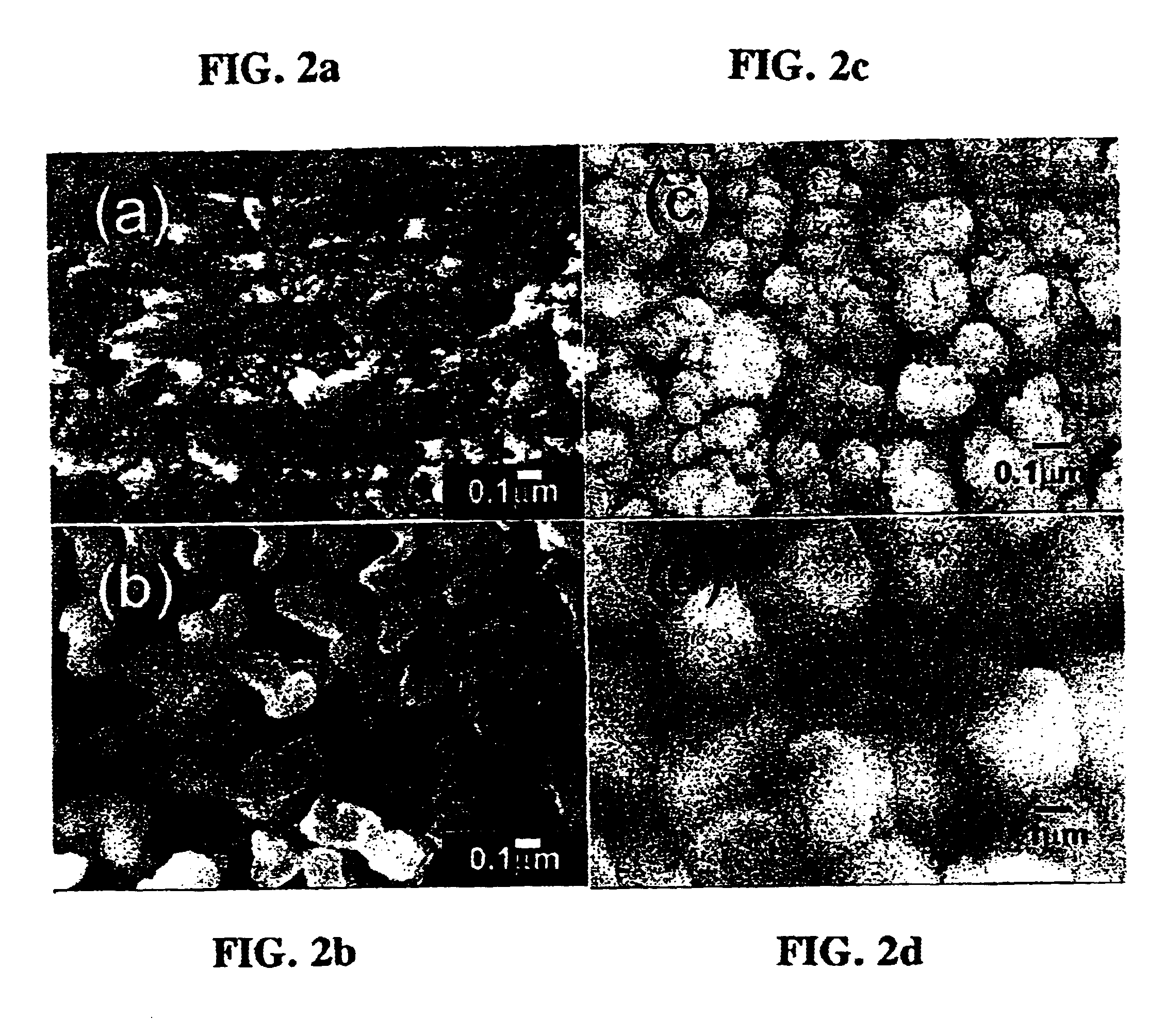Strain-relieved tunable dielectric thin films
a dielectric thin film, strain-relieving technology, applied in waveguide devices, natural mineral layered products, vacuum evaporation coatings, etc., can solve the problems of high power needed to operate current ferrite-based devices, tunable microwave devices based, and current semiconductor-based devices that exhibit substantial losses at frequencies over 2 ghz
- Summary
- Abstract
- Description
- Claims
- Application Information
AI Technical Summary
Benefits of technology
Problems solved by technology
Method used
Image
Examples
example 1
A number of tunable dielectric thin films were fabricated to demonstrate the superior dielectric properties at microwave frequencies of the film according to the present invention over currently existing prior art semiconductor materials as well as other prior art ferroelectric materials. First, a thin (<0.1 .mu.m thick) amorphous BST (x=0.4) buffer layer was deposited on (001) MgO low dielectric loss, single crystal substrate at room temperature in an oxygen background pressure of 200 mTorr by pulsed laser deposition (PLD). The output of a short-pulsed (30 ns full width at half maximum) eximer laser operating with KrF (.lambda.=248 nm) at 1 Hz was focused to a spot size of .about.0.1 cm.sup.2 and an energy density of 1.9 J / cm.sup.2 onto a single-phase BST (x=0.4) target. The vaporized material was deposited onto (001) MgO substrate approximately 5 cm away from the target. The microstructure of BST buffer layer can be modified into any phase between an almost amorphous phase and a r...
example 2
Characterization of small signal microwave properties of a planar varactor containing a strain-relieved and defect-reduced BST (x=0.4) thin film with a BST (x=0.4) buffer layer according to the present invention was made at room temperature using a gap-coupled half-wavelength (.lambda. / 2) stripline resonator connected to an HP 8510C network analyzer.
FIG. 5a illustrates a planar varactor 18 based on a strained but defect-reduced epitaxial BST (x=0.4) film 20 deposited directly on a (001) MgO substrate 10 without a BST (x=0.4) buffer layer, and then annealed in flowing oxygen at 1,000.degree. C. for 6 hours. FIG. 5b illustrates a planar varactor 24 based on a strain-relieved and defect-reduced randomly oriented crystalline BST (x=0.4) film 16 deposited on a (001) MgO substrate 10 with a BST (x=0.4) buffer layer 12 in accordance with the present invention, and then annealed in flowing oxygen at 1,000.degree. C. for 6 hours. For both types of varactor shown in FIGS. 5a and 5b, single-ga...
PUM
| Property | Measurement | Unit |
|---|---|---|
| thickness | aaaaa | aaaaa |
| thickness | aaaaa | aaaaa |
| thickness | aaaaa | aaaaa |
Abstract
Description
Claims
Application Information
 Login to View More
Login to View More - R&D
- Intellectual Property
- Life Sciences
- Materials
- Tech Scout
- Unparalleled Data Quality
- Higher Quality Content
- 60% Fewer Hallucinations
Browse by: Latest US Patents, China's latest patents, Technical Efficacy Thesaurus, Application Domain, Technology Topic, Popular Technical Reports.
© 2025 PatSnap. All rights reserved.Legal|Privacy policy|Modern Slavery Act Transparency Statement|Sitemap|About US| Contact US: help@patsnap.com



